$11 Billion-A-Year Selling Dogs
Kim Kavin, The Dog Merchants
 Driven by her incredible curiosity, Kim Kavin uncovered the world of dog auctions. Over 11 BILLION dollars exchanges hands during the buying and selling of companion animals. Even the so-called 'rescues' are partaking in the auction process, using donated dollars to buy, rehabilitate and adopt these dogs at considerably high prices. While not necessarily humane, nor ethical, it's legal simply because pets are viewed as property in the eyes of the law.
Driven by her incredible curiosity, Kim Kavin uncovered the world of dog auctions. Over 11 BILLION dollars exchanges hands during the buying and selling of companion animals. Even the so-called 'rescues' are partaking in the auction process, using donated dollars to buy, rehabilitate and adopt these dogs at considerably high prices. While not necessarily humane, nor ethical, it's legal simply because pets are viewed as property in the eyes of the law.
We love them with all our hearts, but do we really know where our dogs came from? Kim was surprised when she first heard of dog auctions in the Midwest. She wasn't sure if it was legal or even regulated. She was so curious she flew out there to see it for herself.
She ended up sitting in a barn in Missouri and watched about 300 dogs over the course of 8 hours get auctioned off to the highest bidders. It was a bright, light barn with bleachers. Many people were there, even bringing their children. There were also concessions where you could purchase snacks and sodas. She says it was like being at the county fair.
On that particular day, over $100,000 exchanged hands, paid by both breeders and rescuers, who were bidding on the same dogs. This included litters that were brought to the auction by commercial breeders who have no more use for them. Perhaps they were looking to get paid off and to move on to their next venture.
When Kim interviewed the owner of the dog auction, she found out that about two-thirds of the people were commercial breeders looking to buy dogs to add to their operations and the other one-third of the people were rescuers trying to outbid them.
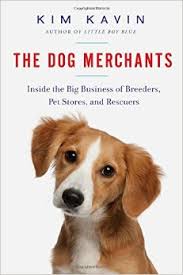 This might even lead to a litter of puppies from the same mother being split in two. The breeders would purchase half of the litter and take them home and sell them for thousands of dollars as purebreds, while the other half of the litter would be bought by the rescuers who would move the dogs to other states where there was a need and sell them for a couple of hundred dollars and call them rescuers from puppy mills, even after they had handed over the money to buy them. A commission would be made for both types of purchases to the dog auctioneer.
This might even lead to a litter of puppies from the same mother being split in two. The breeders would purchase half of the litter and take them home and sell them for thousands of dollars as purebreds, while the other half of the litter would be bought by the rescuers who would move the dogs to other states where there was a need and sell them for a couple of hundred dollars and call them rescuers from puppy mills, even after they had handed over the money to buy them. A commission would be made for both types of purchases to the dog auctioneer.
Kim revealed how dog merchants create markets for dogs, often in defiance of the usual rules of supply and demand. She took an investigative approach and met breeders and rescuers at all levels, shedding much-needed light on an industry that most people don't even realize is an industry.
Unfortunately, this is all legal, as animals are considered property. It is just buying and exchanging property for cash. Hopefully, the laws will change where animals will no longer be considered property but family members.
Kim Kavin's book, The Dog Merchants, was the first book to explain the complex and often surprisingly similar business practices that extend from the American Kennel Club to local shelters, from Westminster champions to dog auctions.
Kim's goal was to advance the conversation about how all dogs are treated, from puppy mills to high-kill shelters. She showed that a great deal can be improved by understanding the business practices behind selling dogs of all kinds.
Instead of pitting rescue and purebred people against each other, The Dog Merchants shows how all dog lovers can come together, with one voice as consumers, on behalf of all our beloved companions.
Visit Website
3 Things To Calm Pet Allergies
Dr. Marty Becker, America's Veterinarian
 Dr. Becker tells us that the number one reason people take their pets to the vet is because of allergies and skin problems. But before you rush your pet to the vet, there are some things you can do at home.
Dr. Becker tells us that the number one reason people take their pets to the vet is because of allergies and skin problems. But before you rush your pet to the vet, there are some things you can do at home.
The first thing you need to do to help your pet with allergies is to bathe them weekly. You should also use a shampoo that is recommended by your veterinarian. By doing this, you can expect to get a dramatic decrease in skin problems because it will wash away many, or most of, the allergy triggers that are on your pet's coat or skin.
Think of your dog as a 4-legged swifter or dust mop. What you are doing by giving them a bath once a week is recharging the swifter or just cleaning out the dust mop. Surprisingly, this will not dry out their skin when using the proper shampoo.
Another thing you can do is to give your dog a 5-minute cool water soak, if they have really sensitive skin. Do this after their bath. Warm water aggravates the itching and cool water diminishes the skin inflammation.
One item we hear a lot about is oatmeal, which is really good for a pet's skin. Many veterinarian dermatologists recommend adding colloidal oatmeal, like Aveeno, to the bath water to give it a smooth, silky feel which helps to calm down skin inflammation.
For his dogs, Dr. Becker uses Earth Bath Shampoo and then adds Aveeno. However, there are a lot of good shampoos, which make it difficult to choose.
 You can also use unscented baby wipes to wipe down your pet every time they go outside to do their business. This will help to remove any allergens they may have picked up outside.
You can also use unscented baby wipes to wipe down your pet every time they go outside to do their business. This will help to remove any allergens they may have picked up outside.
It's also a good idea to keep your pets inside during the peak pollen times, as there are certain times of the day when pollen is at its worse, especially in the early morning and evening.
There is a product on the market called Apoquel, which Dr. Becker states is a miracle pill for pets with allergies, but it must be given every day.
Dr. Becker fought skin problems with one of his own dogs for four years. Literally, after giving his dog the Apoquel pill, she stopped itching within 2 hours and hasn't itched since. This pill can be given to dogs with all types of allergies, from pollen to dust mites and even food sensitivities. It can be very difficult to diagnose just which allergy or allergies your dog has and fortunately this pill works on all types of allergies, with no side effects.
Visit Fear Free Happy Homes for tips on making your home fear free and to locate a Fear Free Veterinarian near you. Go to Fear Free Pets to become certified.
Listen and Explore the Fear Free Expert Series
 When Pet Food Is Medicine - Dr. Debbie
When Pet Food Is Medicine - Dr. Debbie
Proper pet nutrition is more than just diet choices for the healthy pet. It's even more important to properly feed the sick pet or those with chronic diseases. What you put in your pet's food bowl can help, or harm, his ability to cope with illness.
Peek into your average veterinary office and you'll likely find one or more brands of therapeutic diet foods created to manage pet specific pet health conditions. Veterinarians prescribe therapeutic diets to help pets with kidney disease, diabetes, pancreatitis, weight loss or heart disease. Special digestive diets may focus on hypoallergenic ingredients, fiber content or fat levels. Some diets prevent or dissolve mineralized stones in the urinary bladder. There are even diets to keep the spring in your arthritic dog's step and diets to aid in treating pets with cancer.
The grandfather of veterinary nutrition was Dr. Morris who in 1940 designed a diet to improve longevity of his dog, Buddy, who was a seeing-eye dog battling kidney disease. His efforts led to the introduction to Hill's K/D diet, a favorite diet used today for dogs and cats with kidney dysfunction. Today many more diets and conditions are addressed by companies such as Science Diet, Royal Canin, Purina and Iams.
As a veterinarian I recognize the value that therapeutic diets lend to managing my patients' health. But my strongest testament to their value is as a doggie momma who feeds a therapeutic diet to my own dog, Magnum.
My Labrador Magnum suffers from food allergies with frequent facial skin infections, bad skin odor, scratching and unpleasant gastrointestinal signs with diarrhea and flatulence. After several diet trials with various hypoallergenic diet approaches, he now thrives on a rabbit based therapeutic diet by Royal Canin. His doggie kisses are sweeter smelling now, he's content and he isn't a walking gaseous explosion anymore.
But be prepared to dig deeper in your wallet for therapeutic diets. The research behind these foods will cost the consumer more than average pet foods. Just look at the example of Magnum's food. This diet runs $86 for a 25-pound bag of dry food. This sure isn't cheap. But the investment can pay off in lower medical costs and fewer veterinary visits, justifying the additional cost. In Magnum's case, we are able to avoid continued treatment of skin infections, thereby avoiding medication use and he is spared incessant itching.
 Some pet owners turn to home cooked diets in order to avoid the costs of therapeutic diets. Without guidance and veterinary nutrition analysis, pet owners may risk shortchanging their pet's nutrition. One research study identified that over 90-percent of home prepared diets for sick pets failed to be nutritionally adequate. Quality ingredients aren't cheap and a well-produced home cooked diet often ends up costing far more to prepare than commercially produced therapeutic diets.
Some pet owners turn to home cooked diets in order to avoid the costs of therapeutic diets. Without guidance and veterinary nutrition analysis, pet owners may risk shortchanging their pet's nutrition. One research study identified that over 90-percent of home prepared diets for sick pets failed to be nutritionally adequate. Quality ingredients aren't cheap and a well-produced home cooked diet often ends up costing far more to prepare than commercially produced therapeutic diets.
If your veterinarian recommends nutritional management with a therapeutic diet, discuss all the options with your doctor. Inquire about different brands and sizes of food packages available, as many options are available. Get your money's worth on these diets by following your veterinarian's recommendations. Avoid mixing therapeutic diets with regular foods. This only hinders your pet's results and give you a false sense of saving money by making the food last longer.
As for Magnum, I choose to feed him his therapeutic diet and avoid popping pills into him. That's my gauge of a therapeutic diet success - food that serves like medicine in the doggie bowl, but without the hassles.
Featured veterinarian known as "Dr. Debbie" on national pet radio program, Animal Radio. Ebook author of "Yorkshire Terriers: How to Be Your Dog's Best Friend"; "Pugs: How to Be Your Dog's Best Friend"; "Mini Schnauzers: How to Be Your Dog's Best Friend"; and "Shih Tzu: How to Be Your Dog's Best Friend." Dr. Debbie's books.
Visit Website
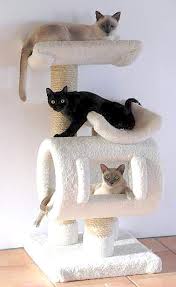 5 Indoor Activities To Keep Your Cat From Going Crazy
5 Indoor Activities To Keep Your Cat From Going Crazy
Robert Semrow, Animal Radio Listomania
Crazy Cat People is a term often misused and certainly not something we believe here at Animal Radio. That being said, boredom and neglect can create behaviors in your cat that can certainly create challenges for sane cat people. So do yourself, and more importantly your cat a favor by creating an indoor environment that enriches and entertains your cat.
Here are a few suggestions:
Let's start with indoor places to room. A cat tree, cat perch or cat mansion will all provide a place where the cats can truly be the kings and queens of their realms. These items have become more stylish, less intrusive and more integrated in homes than ever before. The sophistication and innovation have not only benefited cat owners, but the cats them elves. Cat's want to be challenged, they demand stimulation and their curiosity will certainly get the best of them otherwise. Thus the need for nine lives.
Next up are toys. Have a variety of toys for them to play with and place them in places that encourage them to seek them out and engage their prey sensibilities. Toys that offer interaction and speed are also a great way to engage, encourage and satisfy their prey instincts in a way that also helps you bond and enjoy each other's company. Cat toys have also become much more innovative and tech driven. From home based cameras, treat and laser units that you can control with your phone while you are away, to toys that move quickly and provide a hunting play experience, technology has given cats and cat parents more to do than ever before.
 Next is the reality that anything is a toy for a cat. An empty box, an empty bowl, and an empty shopping bag - those are all toys and anything in your home should be considered accessible for a cat. Any cat parent knows that a cat can find joy and adventure in places and things that most of wouldn't find interesting. It doesn't have to be high tech or costly to entertain you cat. It just needs to offer a little something that your cat has shown interest in previously. You know your cat and you know what they like to get in to. Instead of getting upset when you don't like them in something, offer an alternative to interest them in a behavior or play time that you do approve of.
Next is the reality that anything is a toy for a cat. An empty box, an empty bowl, and an empty shopping bag - those are all toys and anything in your home should be considered accessible for a cat. Any cat parent knows that a cat can find joy and adventure in places and things that most of wouldn't find interesting. It doesn't have to be high tech or costly to entertain you cat. It just needs to offer a little something that your cat has shown interest in previously. You know your cat and you know what they like to get in to. Instead of getting upset when you don't like them in something, offer an alternative to interest them in a behavior or play time that you do approve of.
That also brings up training your cat. Yes, it's possible to train a cat and many cats will excel at it if you are willing to put in the time and patience. Cats are intelligent and love to learn, thus their intense curiosity. Indulge it and train the behaviors you want. That will certainly create a less chaotic and crazy cat home.
Finally, your cat wants to be outdoors. If you have the space, consider an enclosed outdoor area that will allow your cat outside time that is safe for them and other outdoor creatures. If not, consider dedicating at least one window to being a cat refuge where they can look outside and enjoy the beauty of nature from the safety of the indoors. With that in mind, hang a bird feeder or twelve in the sight lines of the window so they can see the birds, squirrels and other wonders of nature.
Anyone can get stir crazy spending their lives indoors. Share your ideas on indoor engagement for cats on our Animal Radio Facebook Page.
Visit Website
Litter Box Etiquette
Lucy Pet Foundation
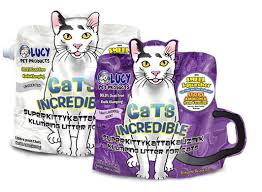 Yes, there indeed is etiquette for your kitty's litter. Doc Halligan (Lucy Pet Foundation) will help any cat owner solve their litter-box issues. Cat not going inside the box? Maybe you're not following the etiquette.
Yes, there indeed is etiquette for your kitty's litter. Doc Halligan (Lucy Pet Foundation) will help any cat owner solve their litter-box issues. Cat not going inside the box? Maybe you're not following the etiquette.
If you have a baby and their diaper gets dirty - you change it. But what if you have a new kitten for the first time - what do you do? People just aren't educated on proper litter box etiquette.
Cats are clean animals. The number one reason cats don't use a litter box is because they don't want to use a litter box that is dirty. They don't want to step in waste. In the wild they would go to a clean spot, do their business and then cover it up.
The rule for the amount of litter boxes you should have is one for every cat plus an extra one. So if you have one cat, you should have two boxes. This means if you can't get to the box to clean it frequently, you will at least have a second one as a backup.
The location of the litter box is also extremely important. Cats have acute hearing and acute sense of smell, as they are predators. This makes them very sensitive to sound and movement. You don't want to put a litter box in an area where there is a lot of commotion and activity. It needs to be in a quiet place. You can places the boxes in separate locations, but if space is limited, you can place them side-by-side.
So do you use a covered box or one that is open and what type of litter do you use? The smell can be amplified in a litter box with a cover. However, if you use Cats Incredible Litter from Lucy Pet Products, which is a clumping litter made from clay that has an extra ingredient that stops ammonia from forming, you can put a lid on the box if your cat prefers. Studies also show that cats prefer clay litter.
Here are some tips to keep your cat happy with their litter box.
- Have as many litter boxes as you have cats plus one extra, and they can be side by side.
- Place the litter boxes in a quiet location that is easily accessible like a bathroom or a spare bedroom.
- Avoid placing the litter box in the laundry or utility room that may be too noisy or has too much traffic.
- Never startle your cat when they are using the litter box.
- Make sure you are using a litter that your cat likes. Studies show that most cats prefer clumping clay litter.
- Make sure you have enough litter in the box. Keep at least 2-3 inches of litter in the litter box at all times and completely change out litter monthly.
- Scoop the litter box at least once a day to remove all urine and fecal waste.
- Never punish your cat for going outside of the litter box.
- Clean you litter box with an antimicrobial soap and rinse thoroughly to remove any traces of ammonia.
- Use the right litter box. Some cats may dislike covered or hooded boxes so it may be advisable to use a traditional open litter box.
Follow these rules of litter box etiquette and both you and your cat will be happy!
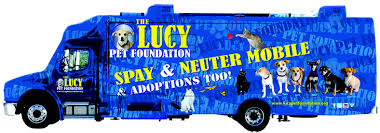 The Mission of The Lucy Pet Foundation is to reduce pet overpopulation by having mobile spay/neuter clinics across the country and to support causes that benefit animal welfare. The Lucy Pet Foundation currently has two buses that travel around Southern California focusing on spaying and neutering. These buses are state of the art surgery units. Their next focus is in generating more funds to expand the work of these buses and have more across the country.
The Mission of The Lucy Pet Foundation is to reduce pet overpopulation by having mobile spay/neuter clinics across the country and to support causes that benefit animal welfare. The Lucy Pet Foundation currently has two buses that travel around Southern California focusing on spaying and neutering. These buses are state of the art surgery units. Their next focus is in generating more funds to expand the work of these buses and have more across the country.
The Lucy Pet Foundation not only offers free and reduced spays and neuters, they also do microchipping, vaccines and de-wormings. Spaying and neutering is not only great for pet population control, but it has been proven that an animal will live on an average of 40-percent longer after having this surgery.
Visit Website
Can You Use Human Shampoo on Your Pet?
The Dogfather's Grooming Tip with Joey Villani
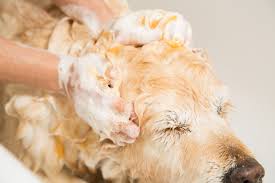 Is there a difference between human and pet shampoo? Can you use human shampoo on your pet? The answer to both questions is yes and no.
Is there a difference between human and pet shampoo? Can you use human shampoo on your pet? The answer to both questions is yes and no.
Joey explains that if you have an animal with a healthy coat and you use human shampoo, you could end up with a dry, itchy pet. But this is not always the case, as shampoos have a pH and acid level.
In human shampoos, the pH and acid is higher than in pet shampoos. However, there are still a lot of human shampoos that you can use on your pet that are neutral. One way is to test your shampoo level with a pH stick.
If you have an animal that has chronic skin problems, human shampoo can affect the skin problems and actually make them worse. This is because the shampoo might be very drying, causing them to itch and scratch.
In most cases, unless you really know what's in your shampoo, it's best to stick with pet shampoo.
Animal Radio News - Lori Brooks
 Does Your Pet Have GPS
Does Your Pet Have GPS
You know that you can track your pet dog or cat with your smartphone. All you need is a GPS locator on their collar. But, there are quite a few pet trackers out there, so the electronics review site ZD Net has some recommendations. When it comes to dogs the one they like is Whistle, because it's so small and light and weighs only 1.3 ounces. It's also waterproof, has a rechargeable battery that's good for 30 days AND the app can also be used to track your dog's long-term health trends. You can also receive notifications if there are significant changes to their activity or sleep patterns. The unit requires a service plan. But what about cats? ZD Net reviewers remind us there are some trackers that claim to work for both cats and dogs, they're only recommended for cats over 8 pounds and that's a pretty big cat. Their cat GPS tracker of choice is called Pawtrack, which was designed especially for cats, for cat owners by cat owners. Pawtrack allows your pet cat to be tracked by GPS and another type of satellite that also detects when the cat is at home. There's only complaint about Pawtrack is its short battery life, only about three days, so you have to remember to charge it regularly.
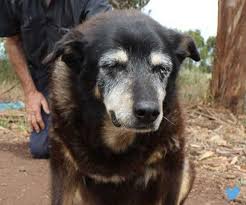 Oldest Dog Died at Age 30
Oldest Dog Died at Age 30
Maggie the Kelpie, an Australian dog that was possibly the oldest dog in the world, passed away at 30 years old, according to her owner who lived in Australia. At the age of 30, Maggie was over 200 in human years and a contender for the oldest dog in the world. However, her owner had lost the original paperwork for the dog, so her age could not be independently verified. Still, if you're thinking, "No way, no dog could live to be 30," consider that officially, the title of the oldest dog in the world still belongs to Bluey, an Australian cattle-dog who was verified at 29 years and five months when he passed away. According to the Guinness Book of Records, his owner bought him as a puppy in 1910 and he grew up as a working dog with sheep and cattle until he passed in November 1939.
UK Popular Pet Names
We know the most popular pet names in America for dogs, they're Luna, Bella and Max but what names do other countries have as their favorites? In the UK, it turns out that Alfie is the most popular name for dogs and fourth most popular cat name. Interestingly, Alfie does not even crack the top 100 list of most popular pet names in America. Favorite pet names previously in the UK were, which are NOT broken down by male and female, Alfie, Poppy, Bella then Charlie. Most popular cat names in the UK were: same names, different order for cats - Charlie was first for cats, followed by Bella, Poppy then Alfie. And the most popular names for horses were: Rosie, Alfie, Bailey and Belle. Animal Friends Pet Insurance, which did the research, said, "Trends over the last few years have shown that people are now far more likely to give their pets 'human' names than ever before, which could be attributed to the fact that we are more likely to consider our pets are a part of the family."
 When Dogs Fly
When Dogs Fly
When rescuers met Shadow, the abandoned pup was just 22 hours away from being put down. Then he learned how to fly an airplane. Shadow was a finalist on the UK reality show, "Dogs Might Fly," which rescued stray dogs and taught them new tricks, with the goal of training one to successfully pilot a plane. British dog trainer Victoria Stilwell said they looked for dogs "Willing to go the extra mile, to problem-solve and to investigate how to work something out for themselves. In the end the dogs were tested on how successfully they learned to fly through a system of treat-based commands. It was pretty cool. Watch the video.
Shelter Dog Sniffs Out Child Porn
It is so amazing all the things that shelter dogs, who would have otherwise been put to sleep, are now being trained to do. At just 14 months old, Gia was a sleuthing superstar and the only equipment she needed was her famous nose. Gia was a weapon in a Florida Sheriff's Office arsenal against child pornography. Gia successfully sniffed out tiny Electronic storage cards and devices. Gia could literally sniff out anything that could hold a memory. Dogs with skills like Gia had can cost law enforcement as much as $20,000 to train, but Gia was picked out for her special personality and talents from a local animal shelter and was free to the sheriff's office. Her handler said Gia just had to walk into a room and she could smell the tiny memory devices like we could smell pizza, which was a very good thing, since many most child porn offenders hide things like small thumb drives or even SD cards, often loaded with evidence, in out of the way places like behind an electrical plate in a wall.
 Listen to the entire Podcast of this show (#1227)
Listen to the entire Podcast of this show (#1227)





